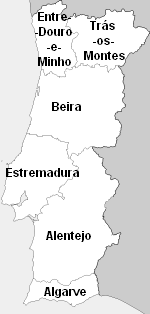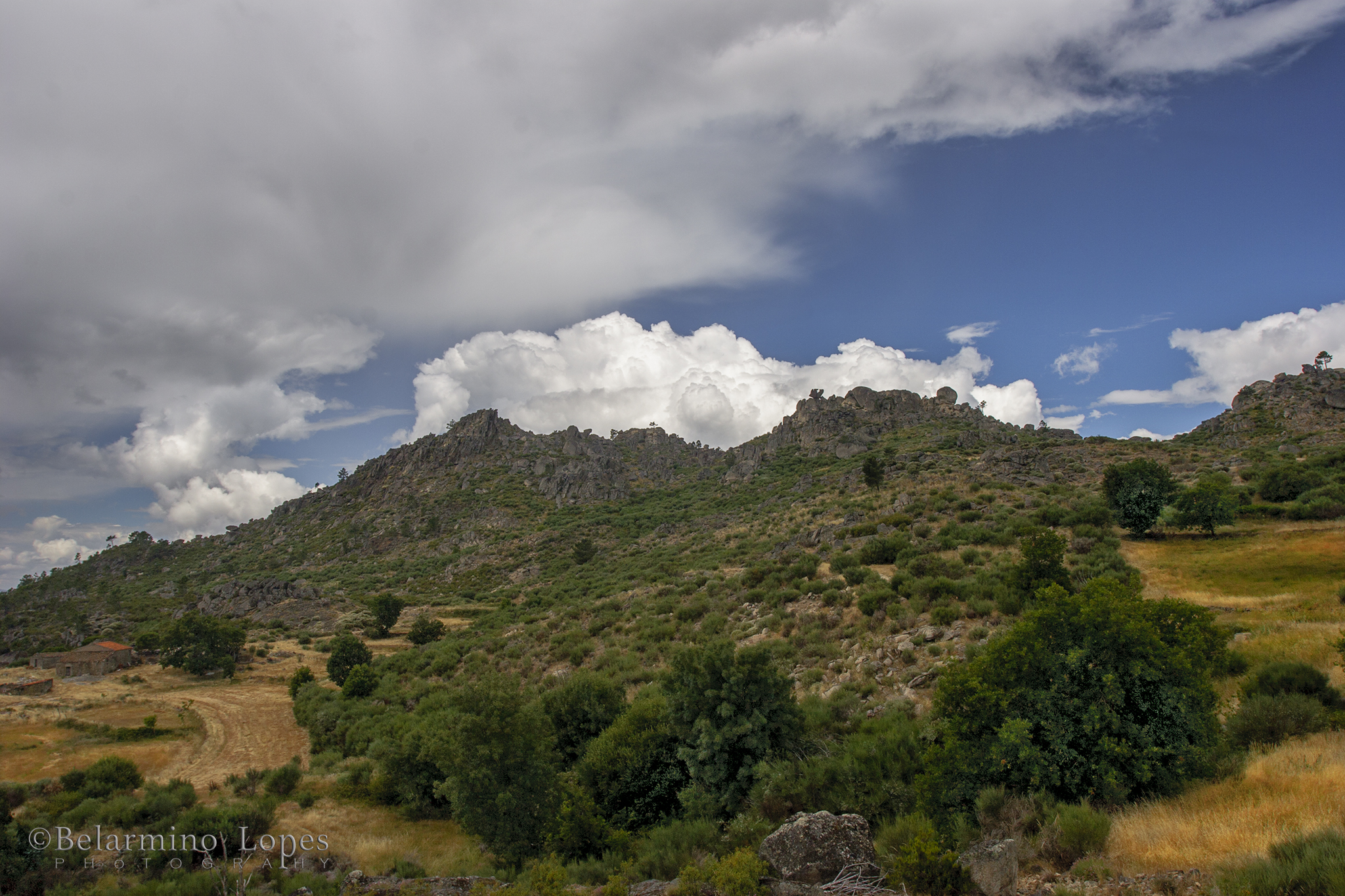|
Beira Province
Beira () was one of the six traditional provinces or ''comarcas'' of Portugal. The territorial extension is different from that of the area called ''the Beiras'', which refers to three provinces of 1936, Beira Alta, Beira Baixa and Beira Litoral. Geography The most important cities within the borders of the traditional province are: Coimbra, Aveiro, Leiria, Viseu, Castelo Branco, Guarda, Figueira da Foz, Covilhã and Pinhel. The main river is the Mondego; other rivers include the Vouga, Dão, Côa, Zêzere and Paiva. The largest mountain range is Serra da Estrela – Continental Portugal's highest – other ranges being the Caramulo, Marofa, Gardunha, and Bussaco. Administrative history After the 15th Century, the new Kingdom of Portugal was divided into six great administrative units, referred to as comarcas. Since the Middle Ages there existed the Beira Province. 1832 In 1832 this province was divided into * Beira Alta * Beira Baixa 1936 In 1936 these were ... [...More Info...] [...Related Items...] OR: [Wikipedia] [Google] [Baidu] |
Vouga River
Vouga River () is a river in the Centro Region of Portugal. The source of the Vouga is the Chafariz da Lapa, at an elevation of , in the parish of Quintela, municipality of Sernancelhe, Viseu District. The course of the river ends in the Atlantic Ocean, in the form of a ria, the Ria de Aveiro. Tributaries * Águeda (left bank) * Caima (right bank) * Sul (right bank) * Teixeira (right bank) Environment Cacia pulp and paper mill effluent, one of the major polluting sources of the Vouga River and Aveiro Lagoon The Aveiro lagoon (''Ria de Aveiro'') is a lagoon in Portugal. It is located on the Atlantic coast of Portugal, south of the municipality of Espinho and north of Mira (to the north of the Cape Mondego). Its average area covers approximately . It ..., is discharged into the Aveiro coastal area. The area has an unpleasant smell due to the effluent. Rivers of Portugal Natura 2000 in Portugal {{Portugal-river-stub ... [...More Info...] [...Related Items...] OR: [Wikipedia] [Google] [Baidu] |
Districts Of Portugal
The Districts of Portugal ( pt, Distritos de Portugal), are the most important first-level administrative subdivisions of continental Portugal. Currently, mainland Portugal is divided into 18 districts. The Portuguese Autonomous Regions of Açores and Madeira are no longer divided into districts. As an administrative division, each district served mainly as the area of jurisdiction of a civil governor, who acted as the local delegate of the Central Government of Portugal. Overview The Districts of Portugal were established by a royal decree of 18 July 1835. On the Portuguese mainland, they correspond to the current districts, with the exception of Setúbal District, which is the result of a split of Lisbon District in 1926. This decree did not affect the then extensive colonial empire. The 1976 Portuguese Constitution specifies that Portugal has only, as first-level divisions, the autonomous regions (Azores and Madeira) and the administrative regions (to be created ... [...More Info...] [...Related Items...] OR: [Wikipedia] [Google] [Baidu] |
Beira Transmontana , a lake in Colo ...
Beira can refer to: *Beira (mythology), the mother to all the gods and goddesses in the Celtic mythology of Scotland *Beira, Azores, a small village on São Jorge Island * Beira (Portugal), the name of a region (and former province) in north-central Portugal; three provinces were later known by the name: **Beira Alta Province (extinct) **Beira Baixa Province (extinct) **Beira Litoral Province (extinct) *Beira, Mozambique, a port city in Mozambique *Port of Beira, a Mozambican port *Beira Railroad Corporation, operating in Mozambique *Prince of Beira, a title within the Portuguese royal house *Beira (antelope) (scientific name ''Dorcatragus megalotis''), a species of antelope * 1474 Beira, an asteroid *Beira Lake Beira Lake (/bˈɐjɾɐ/; Sinhalese: බේරේ වැව, translit. ''Bērē væva''; Tami: பேரே ஏரி, translit. ''Pērē ēri'') is a lake in the centre of the city of Colombo in Sri Lanka. The lake is surrounded by many large b ... [...More Info...] [...Related Items...] OR: [Wikipedia] [Google] [Baidu] |
Beira Alta (region)
Beira Alta was one of the 13 regions of continental Portugal identified by geographer Amorim Girão, in a study published between 1927 and 1930. With Beira Trasmontana it became Beira Alta Province Beira Alta Province (; "Upper Beira") was a Portuguese province in the north of Portugal. Vast plateaus, river valleys, mountains, and castles abound in Beira Alta. Formerly it was part of the Beira Province. The two main cities were Guarda a .... Regions of Portugal {{Portugal-geo-stub ... [...More Info...] [...Related Items...] OR: [Wikipedia] [Google] [Baidu] |
Beira Province
Beira () was one of the six traditional provinces or ''comarcas'' of Portugal. The territorial extension is different from that of the area called ''the Beiras'', which refers to three provinces of 1936, Beira Alta, Beira Baixa and Beira Litoral. Geography The most important cities within the borders of the traditional province are: Coimbra, Aveiro, Leiria, Viseu, Castelo Branco, Guarda, Figueira da Foz, Covilhã and Pinhel. The main river is the Mondego; other rivers include the Vouga, Dão, Côa, Zêzere and Paiva. The largest mountain range is Serra da Estrela – Continental Portugal's highest – other ranges being the Caramulo, Marofa, Gardunha, and Bussaco. Administrative history After the 15th Century, the new Kingdom of Portugal was divided into six great administrative units, referred to as comarcas. Since the Middle Ages there existed the Beira Province. 1832 In 1832 this province was divided into * Beira Alta * Beira Baixa 1936 In 1936 these were ... [...More Info...] [...Related Items...] OR: [Wikipedia] [Google] [Baidu] |
Serra Do Bussaco
Serra (Latin for "saw") may refer to: People * Serra (footballer) (born 1961), Portuguese footballer * Serra (surname) * Serra (given name) Cities, towns, municipalities Brazil *Serra, Espírito Santo, a city in the Greater Vitória area *Amparo do Serra, in Minas Gerais *Araçoiaba da Serra, in São Paulo *Itapecerica da Serra, in São Paulo *Mirante da Serra, in Rondônia *Natividade da Serra, in São Paulo *Pé de Serra, in Bahia *Redenção da Serra, in São Paulo *Rio Grande da Serra, in São Paulo *Santa Maria da Serra, in São Paulo *São Lourenço da Serra, in São Paulo *Serra Azul, in São Paulo * Serra do Navio, in Amapá * Serra do Navio, in Amapá * Serra Negra, in São Paulo *Serra Talhada, in Pernambuco *Taboão da Serra, in São Paulo Italy *La Serra, San Miniato, in Tuscany * Serra (Rocca Santa Maria), in Abruzzo *Serra d'Aiello, in Calabria *Serra de' Conti, in Marche *Serra Pedace, in Calabria *Serra Riccò, in Liguria *Serra San Bruno, in Calabria *Serra San ... [...More Info...] [...Related Items...] OR: [Wikipedia] [Google] [Baidu] |
Gardunha
The Gardunha mountain range (''Serra da Gardunha''), so called by the Moors (''Gardunha'' or ''Guardunha'' meaning refuge), is located in central Portugal, in Centro Region, beyond the Serra da Estrela range, giving way to an extensive plain called Beira Baixa Province. It was covered with vineyards in the time of King Denis, who reigned in the 13th and 14th centuries. But the sovereign decided to pull them up and replace them with chestnut The chestnuts are the deciduous trees and shrubs in the genus ''Castanea'', in the beech family Fagaceae. They are native to temperate regions of the Northern Hemisphere. The name also refers to the edible nuts they produce. The unrelat ... trees all over the Alcambar valley. The valley became known as the King's groves. Unfortunately though, due to man's negligence, violent fires destroyed a significant number of trees, although some areas were reforested. ''Pirâmide'' (1,223m/4,013ft), is the highest point in Gardunha mountain rang ... [...More Info...] [...Related Items...] OR: [Wikipedia] [Google] [Baidu] |
Caramulo
Caramulo is a town in Portugal. It is part of the civil parish of Guardão in the municipality of Tondela, Portugal. In Caramulo is housed one of the most important motor vehicle museums in Portugal. Among the exhibits are some very rare cars including António de Oliveira Salazar António de Oliveira Salazar (, , ; 28 April 1889 – 27 July 1970) was a Portuguese dictator who served as President of the Council of Ministers from 1932 to 1968. Having come to power under the ("National Dictatorship"), he reframed the re ... official state vehicle and the fully Portuguese built Alba sports car of the 1950s. Although the tourism industry in the area has had roots for many years due to Caramulo being renowned for the natural Spa baths and health establishments within an untouched forest setting, ideal for leisure activities such as cycling, walking and sightseeing, of late, further expansion of facilities is taking place to accommodate increased demand. Portugal Caramulo Museu ... [...More Info...] [...Related Items...] OR: [Wikipedia] [Google] [Baidu] |
Serra Da Estrela
Serra da Estrela () is the highest mountain range in Continental Portugal. Together with the Serra da Lousã it is the westernmost constituent range of the Sistema Central and also one of the highest in the system. It includes mainland Portugal's highest point at above mean sea level (although the summit of Mount Pico in the Portuguese Azores islands is higher). This point is not a distinctive mountain summit, but rather the highest point in a plateau, being known as Torre ("Tower" in English). Torre is an unusual summit in that it is accessible by a paved road. The peak has a topographic prominence of and its parent peak is Pico Almanzor, in Spain. The mountain range, situated between the municipalities of Seia, Manteigas, Gouveia, Guarda and Covilhã, is about long and is across at its widest point. It is formed from a huge granite ridge that once formed the southern frontier of the country. Rivers There are three rivers that have their headwaters in the Serra da Estrel ... [...More Info...] [...Related Items...] OR: [Wikipedia] [Google] [Baidu] |
Paiva River
The Paiva River () is a river that rises in the Sierra de Leomil, more specifically in the parish of Pêra Velha, Aldeia de Nacomba e Ariz - belonging to the municipality of Moimenta da Beira - and flows into the Douro, in Castelo de Paiva, flowing through the parish of Fornos on the left bank. On the right bank, it flows through the parish of Souselo, Cinfães. It is classified as a Site of Community Importance in the Natura 2000 Network. Threats to the Paiva River The main threat beyond man, comes from the invasion by acacias and the frequent installation of monocultural stands of eucalyptus and maritime pine. Other threats are the implementation of small and large hydroelectric projects; punctual cases of extraction and washing of aggregates, fires, construction of dams, clandestine constructions, implantation of aviaries and fish farms, afforestation of agricultural lands, especially lameiros, cervunais and malhadais. The urban-tourist expansion is another concern for the ... [...More Info...] [...Related Items...] OR: [Wikipedia] [Google] [Baidu] |


.jpg)